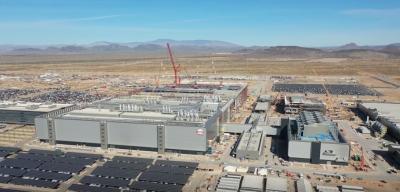Construction work continues in downtown Tampa, as the Florida Department of Transportation (FDOT) rebuilds and widens Interstate 275 from east of State Road 60 to the Hillsborough River. The project will reconstruct all the southbound interstate in the area, as well as northbound I-275 from east of State Road 60 to Himes Avenue.
“This work is needed to help improve regional and local traffic movement by adding capacity, improving safety and reducing commuting times,” said John McShaffrey, FDOT District 7 spokesman. “This segment of interstate is part of FDOT’s master plan for interstate transportation improvements in the Tampa Bay region. Widening and improving I-275 is necessary to keep up with capacity demand and to incorporate modern design standards to one of the oldest sections of interstate highway.
“Safety will be enhanced by providing wider paved shoulders, more gradual curves, increased ramp merge lengths and creating better sight distances by reducing the grade of the roadway at the many bridges crossing over local streets and highways. Rebuilding I-275 towards the outside of the corridor will provide an envelope for transit options in the median, and is necessary to incorporate future pieces of the master plan with a lesser impact on residents, businesses and motorists.
McShaffrey said while the additional capacity and improvements have been needed for years, construction could not begin until the necessary money was appropriated.
“This project was originally part of a larger project to rebuild all of I-275 from downtown Tampa to West Shore Boulevard. When the bids for that project came in significantly over budget, it was divided into three projects that could be built as money became available. The first of these projects began in 2007. This current project is the final of those projects to be constructed.”
The big challenges include keeping traffic flowing as best possible, limiting closure time of interchange ramps and local roads, having access to work areas and coordinating with the city of Tampa regarding its roadways and infrastructure work and adjacent FDOT projects.
“Maintaining positive relations with the public and governmental entities has also been a crucial task before and during construction. Careful planning and constant communications between the owner, the contractor and the community, including neighborhood associations, business districts, major entertainment venues, the city and permitting agencies, has proven to be effective in overcoming many challenges,” said McShaffrey.
The largest traffic shift happened in March, 2015, when southbound I-275 was shifted to three of the four new lanes from west of the Hillsborough River in downtown Tampa to just west of West Shore Boulevard.
“This was a major milestone for the project, providing motorists with many of the designed benefits such as a straighter roadway, more gradual inclines at crossroads and smoother pavement. It also marked a return of all interchange ramps to the right side of the corridor, which eliminated much of the traffic weaving that was previously necessary due to some temporary left-lane entrance and exit ramps. While the southbound roadway was not totally completed with this shift, the new alignment was a marked improvement over previous conditions on southbound I-275 in the downtown to west Tampa area.”
According to James Goyer, Skanska USA, vice president of Florida operations, “At this point, the I-275 reconstruction project is approximately 80 percent complete, with about one year of work remaining. So far, 18 of the 21 bridge structures are finished and already operating. The team is currently in the process of building the remaining three bridges. Additionally, all of the deep drainage installations are complete, with only roadway surface drainage left to install in smaller areas of the project.
Earthwork operations also are complete in about 80 percent of the locations along the project, with approximately 150,000 cu. yds. (114,683 cu m) of earth left to import and place.
“Today, 29 of the 30 Mechanically Stabilized Earth (MSE) walls are finished and a partial section of the remaining wall will be built after the next traffic phase.
Concrete paving operations have two significant mobilizations left that are tied to traffic phasing and asphalt paving and final resurfacing will be ongoing over the next eight months.
“We are currently constructing the next traffic phase, which includes the Cypress Street and Dale Mabry overpasses, and another large section of the northbound interstate. This is planned to open in the fall.”
At the same time, the Skanska and Ajax construction team is cleaning up and finishing its work on all the cross streets throughout the project’s limits. The Intelligent Traffic System will be installed and brought on-line over the next nine months, as crews continue cleaning up and landscaping many of the open areas throughout the I-275 project.
“The main challenge in a project of this magnitude is getting the work done in a very limited space, and in many cases, limited time frames,” said Goyer. “Working in-between live traffic and around moving vehicles presents significant safety and logistical challenges that must be carefully managed.
“The location of the project and the multiple on- and off-ramps from I-275 have made the phasing of the different areas extremely complex, and access and egress to just perform the work must be carefully orchestrated. The project utilizes pieces of equipment such as large excavators, dozers, cranes, front end loaders, and many smaller pieces that the team has to move around and get into the smaller size areas.
“Maintenance of traffic is important to Skanska and Ajax, because the motorists using this highway are our top priority. Due to the strategic location of the I-275 project, each and every decision affects someone’s commute and some sort of traffic pattern. Our client is FDOT, and they are in the business of keeping people moving. For this project to be a success, the new highway needs to be built while getting motorists to their destinations. As a team, we work together to solve any issues that arise and focus on keeping the project on track.”
The I-275 reconstruction project is a major improvement to the traffic patterns in and around downtown Tampa. The complex roadway infrastructure project represents a $215.4 million investment to design and build.
“It has taken an enormous amount of planning and coordination between Skanska and Ajax, the joint venture leading the project’s design and reconstruction, and FDOT, to make this project happen in the successful manner that it has to date,” said Goyer.
An existing asphalt highway was situated in the location where the new version of I-275 is now being built. To make room for the new interstate, traffic had to be shifted and portions of the old roadway demolished to gain the real estate needed to build the new highway.
“Most of the surface area of the I-275 project required some sort of clearing, whether it was removal of landscaping, relocation of trees or total demolition and removal of the existing highway components, including removal of existing bridges, to make room for the reconstruction,” Goyer said. “The I-275 reconstruction project will have imported just over 2 million cubic yards of borrow material to construct the new highway. In addition, excavating, shaping, and re-grading of the areas where the existing highway was located will result in moving another 300,000 cubic yards of dirt.”
Equipment being used on the project includes Caterpillar excavators for drainage installation, earth moving operations, pond excavations, loading material and MSE wall construction; Caterpillar dozers for embanking operations, MSE wall construction and fine grading; Caterpillar loaders for drainage installation, earth moving operations, pond excavations, loading material and MSE wall construction; 84 in. (213 cm) rollers for embanking operations and MSE walls; and cranes for concrete pile driving, concrete girder erection and bridge structure construction.
Other heavy machinery includes Cat 613 scrapers, a Cat RM-350 soil mixer, a Volvo 140 excavator and a Volvo 180 wheeled excavator. At the peak fleet operations, the project had more than 150 pieces of equipment operating on the job site. The main materials I-275 reconstruction crews are utilizing include common embankment fill, select fill, concrete, limerock, asphalt, concrete piles, concrete girders, concrete drainage pipe and concrete MSE wall panels.
Goyer said working in the Tampa area presents significant challenges when it comes to weather, particularly with the summer rainy season.
“On a large borrow and earth moving project, the weather can make or break the schedule and in the summertime in Tampa, there’s always a risk of losing weeks of time due to heavy rains. For example, the first summer on the project back in 2012 was significantly impacted by the rains and made installing the deep 84-inch drainage pipe extremely difficult.
“Constant communication between the project team and FDOT has played a key role in keeping the construction moving forward and meeting major milestones so far. As we enter the last year of construction and the project’s completion nears, the team is working hard every day to stay on schedule and deliver the project to the public as efficiently as possible.
“Work on the I-275 project is going on seven days a week and 24 hours a day, since the start of construction. The project has day shifts and night shifts, weekends and often times during the holidays. With the limited windows of work in many areas, this is a necessity to get the project built. In the high traffic areas, work is only allowed to happen during off-peak traffic hours to avoid impacting commuters, which means construction work happens on nights and weekends.
“We have a team of supervisors who work varying shifts to cover all of the operations taking place throughout the project. Coordinating the different operations and time frames is a significant task, but the team is committed to continuing to collaborate to keep the project moving forward, while keeping everyone safe.”
Goyer said taking the necessary precautions during construction is a top priority.
“The safety of the traveling public and all the employees working on this project is always first and foremost in our planning. Our team’s goal is to provide a safe, quality, and on-time project to our client. We commit to providing a safe work environment every day to ensure every one of our team members makes it home to their families in the same condition as when they came to work.”
When completed, there will be four through-lanes in each direction, along with a flatter roadway without the steep humps at bridges over crossroads to improve sight distance and decrease the chances of accidents. There will also be improved interchanges to help move traffic on and off I-275, plus a wide median to decrease cost and public impact when future improvements are made.
“As far as the public impact, residents and businesses along the highway were warned about noise, vibration and the presence of equipment and workers during construction. Motorists were also alerted to night lane closures, detours and traffic pacing,” Goyer said.
The construction design-build team developed a traffic control plan with three major traffic shifts to help reduce driver confusion and the time needed to complete the project. The closures affect I-275, the interchange ramps and streets under and next to the interstate. Most closures are taking place during night hours. During peak hours, three lanes in each direction available before construction will remain open throughout the project.
Goyer said approaching completion of the project is encouraging to everyone playing a role in the reconstruction of I-275.
“We are extremely proud of Skanska and Ajax team’s work and project execution on the I-275 reconstruction so far, and of the continued professional relationship the two companies have built with FDOT, leading major roadway infrastructure projects across the state of Florida.”
According to McShaffrey with all new pavement and more gradual vertical and horizontal curves, the ride for motorists will be vastly improved from conditions that existed prior to construction.
“Eliminating what has been dubbed the ’roller coaster effect’ where there were quick, steep ascents and descents at bridges over crossroads in the pre-construction roadway, motorists will have much better sight lines and time to react to slowing or stopped traffic. This will help to eliminate many fender-bender type accidents that are particularly common in peak commuting hours. Enhanced lighting, improved drainage and incorporating other modern design standards are all key elements to making I-275 a safer and smoother driving experience.”
With almost 200,000 vehicles traveling the area per day, FDOT is sensitive to drivers, residents and businesses struggling with the many impacts and inconveniences associated with major highway construction work.
“Numerous items were taken into consideration and incorporated into the plans to lessen impacts where feasible,” McShaffrey said. “For example, allowing lane closures only at night when traffic is greatly reduced provides full capacity during peak hours for commuters and keeps commerce moving. Informing businesses and residents in advance of major traffic shifts, ramp closures, etc. is another key component to demonstrate to stakeholders that project progress is steadily continuing and to avoid surprises when the changes occur. With the contracting team working at a steady pace, people see progress every week, which also helps in the public acceptance of the work.
“Certainly, drivers are tired of an interstate system that has had major projects going on in the Tampa Bay area for two decades, but FDOT’s track record of completing these projects on time and delivering improved traffic flow has mitigated much of the public negativity that typically surrounds massive civil infrastructure projects.
Work began at the end of July, 2012. The project is expected to be completed by fall 2016. No lanes are closed on the mainline, with FDOT committed to maintaining at least the same number of lanes in each direction as were available before construction. New lanes will open up in phases before the end of the project. The fourth southbound lane is expected to be open by the end of 2015, with the fourth northbound lane opening in summer 2016.
Said McShaffrey, “The work ethic and dedication demonstrated by the department, the joint venture, vendors and all involved with this vital transportation project will provide the public with highway improvements that will improve safety and further ensure the mobility of people and goods in the region. In conjunction with past and future projects, this reconstruction effort will help improve economic prosperity, improve quality of life and position the Tampa Bay area for continued success as a great place to live, work and play.”
Today's top stories















